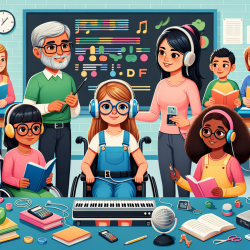In the evolving landscape of special education, the integration of assistive technology (AT) stands out as a transformative force, offering students with disabilities unprecedented opportunities to access education and communicate more effectively. The Special Education Technology - British Columbia (SET-BC) program is a pioneering example of how collaborative efforts between school districts and specialized programs can lead to significant advancements in the educational experiences of students with special needs. This blog explores the collaborative model employed by SET-BC, its evolution, services, and impact, providing valuable insights for practitioners looking to enhance their skills in implementing assistive technology.
The Evolution of SET-BC
Established following recommendations from the Provincial Advisory Committee on Computers in 1988, SET-BC was designed to prioritize technology for students with special needs. Initially operating under an expert model, SET-BC provided prescriptive solutions to referred students. However, recognizing the importance of local input and decision-making, SET-BC transitioned to a collaborative model. This approach empowers school districts to work alongside SET-BC staff in determining how technology can best support students' educational goals, ensuring a more personalized and effective implementation of assistive technologies.
Collaborative Model and Services
The collaborative model places decision-making responsibilities in the hands of school districts, with SET-BC providing support in the form of planning, equipment loans, training, and information. This model fosters a deeper understanding of each student's unique needs and how technology can be tailored to meet these needs. Key services include:
- Planning: Developing a Collaborative Action Plan (CAP) for each student, outlining educational goals and the technologies to achieve them.
- Provincial Loan Bank: Providing long-term loans of assistive devices and technology.
- Training: Offering inservice training to school-based teams and educational courses on assistive technologies.
- Information: Maintaining demonstration sites and resources like the re:SET newsletter and SETnet bulletin board service for sharing information and innovations in assistive technology.
Impact on Students and School Districts
The SET-BC model has significantly impacted students with disabilities, allowing for greater inclusion and access to the curriculum. By working closely with school teams, SET-BC has facilitated the successful implementation of technology in classrooms, enabling students to achieve their educational objectives alongside their peers. Implementation projects, such as "Hyperstudio Buddies," illustrate how assistive technology can be integrated into classroom activities, benefiting all students and fostering an inclusive learning environment.
Best Practices for Implementing Assistive Technology
The success of SET-BC offers several best practices for practitioners looking to implement assistive technology:
- Adopt a collaborative approach, involving all stakeholders in the planning and implementation process.
- Customize technology solutions to meet the individual needs of students, ensuring they align with educational goals.
- Provide comprehensive training for school-based teams to maximize the effective use of assistive technology.
- Encourage ongoing evaluation and adaptation of technology strategies to meet evolving student needs.
Encouraging Further Research and Collaboration
The achievements of SET-BC underscore the importance of collaboration, innovation, and continuous learning in the field of special education technology. Practitioners are encouraged to explore further research on assistive technology and to seek collaborative opportunities that can enhance the educational experiences of students with disabilities.
In conclusion, the SET-BC program demonstrates the profound impact that collaborative efforts and assistive technology can have on the education of students with special needs. By embracing a model that values partnership, customization, and ongoing support, educators can significantly enhance the inclusivity and effectiveness of special education. As we continue to explore and implement these technologies, it is crucial to remain committed to the principles of collaboration, innovation, and individualized support that have made programs like SET-BC successful.
To read the original research paper, please follow this link: Special Education Technology-British Columbia Working Collaboratively with School Teams to Provide and Implement Assistive Technology.










